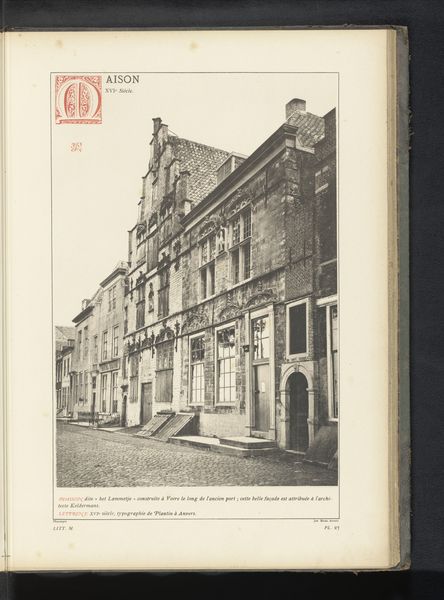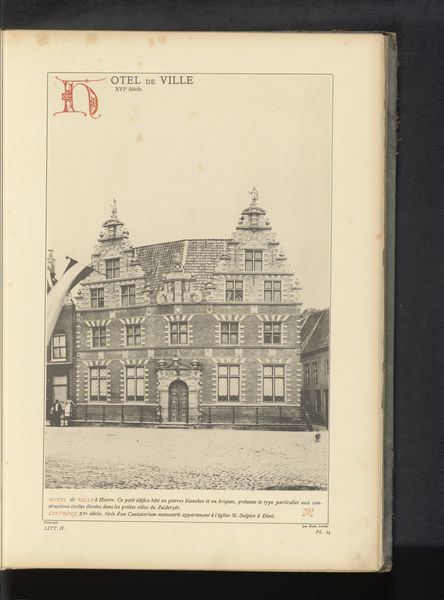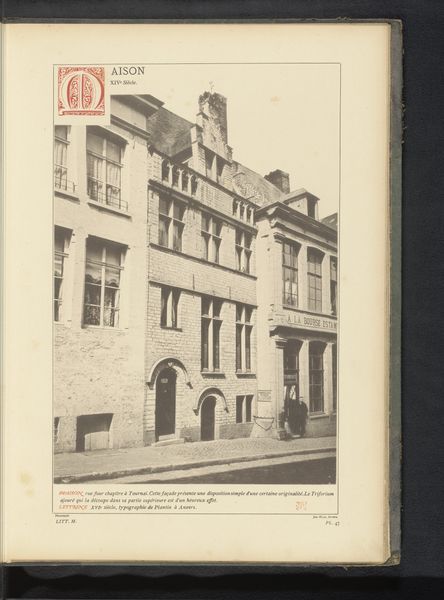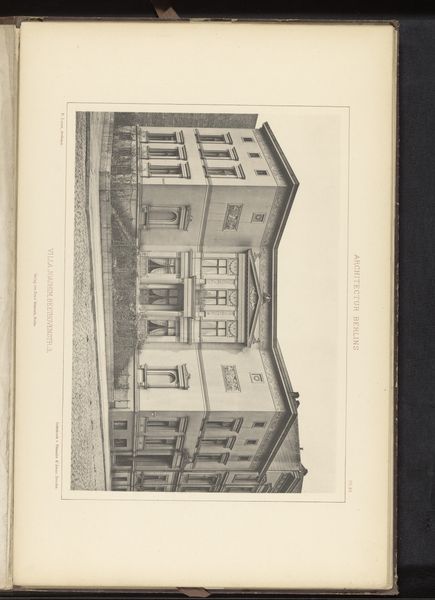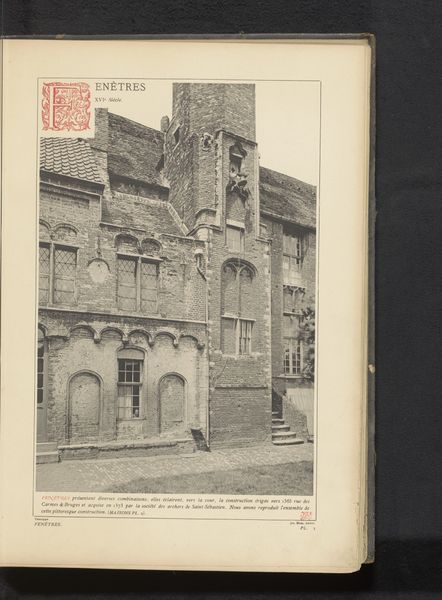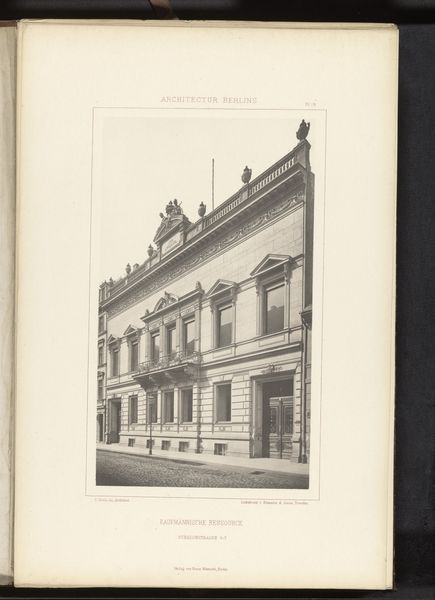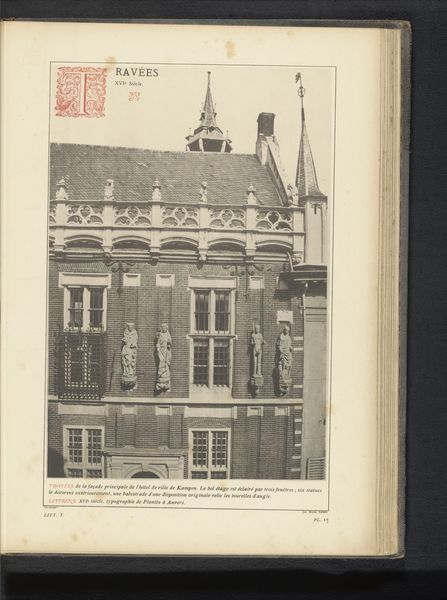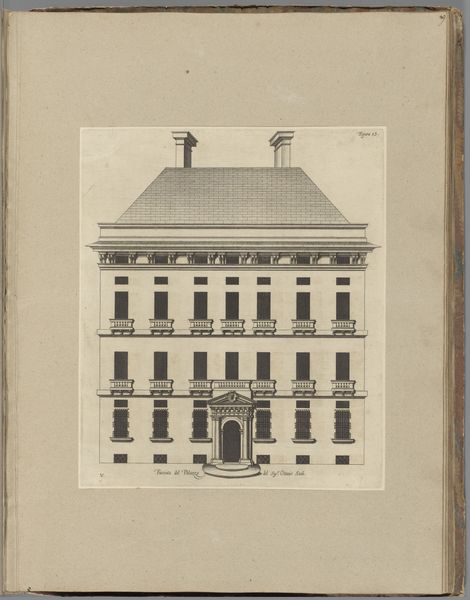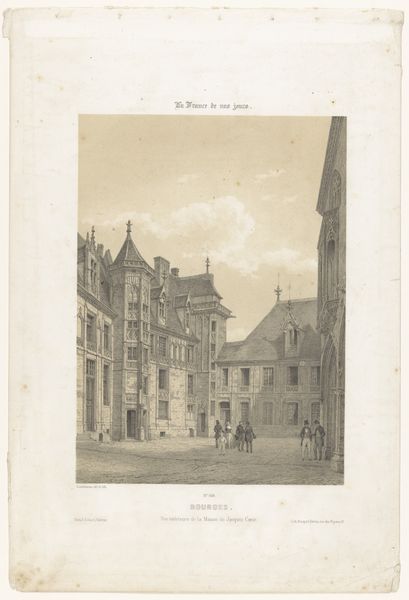
Gezicht op een façade van een gebouw aan de Rue de Namur in Leuven, België before 1880
0:00
0:00
print, photography, architecture
# print
#
photography
#
cityscape
#
architecture
#
historical font
#
building
Dimensions: height 336 mm, width 228 mm
Copyright: Rijks Museum: Open Domain
Curator: This black and white photograph presents us with a façade located on the Rue de Namur in Leuven, Belgium, captured sometime before 1880. Editor: It has such a somber feel. Stark, almost like a stage set devoid of actors. It emphasizes solidity and permanence, but simultaneously feels silent and a little haunting. Curator: It’s interesting you say that, as photography, especially in its earlier forms, carried connotations of capturing not just images but essences of time and place. The photograph might have been taken with printing processes in mind to reproduce the view more easily. Notice how the anonymous photographer focused on the detailed brickwork and classical architectural details. Editor: The emphasis on the architecture does convey an ideal. This isn’t just any building. It hints at social structure, power perhaps. Who was meant to inhabit such a meticulously crafted space? It looks like it’s part of something much larger. Curator: Given its location and the time period, this might very well be linked to institutional authority. Leuven was a significant center of learning and religious power. If we look closer, you'll note inscriptions which provide some clues; buildings weren't just functional structures, but communicative tools embedding cultural values and social memory. Editor: And it's captured at a precise moment in history; prior to monumental shifts in social policies and, you know, modern identity. We are now invited to reflect on our own moment through the echoes of this meticulously captured image. Curator: Absolutely. I think, it provides a tangible link. What this space meant then, compared to what it means now is an invitation for discourse across temporal plains. The shadows offer more mystery than solid illumination! Editor: Perhaps these structures aren't merely remnants of history, but spaces continuously negotiating meaning between past and present. These stones still whisper, don't they? Curator: They certainly do. Editor: Beautiful and very informative exchange.
Comments
No comments
Be the first to comment and join the conversation on the ultimate creative platform.


